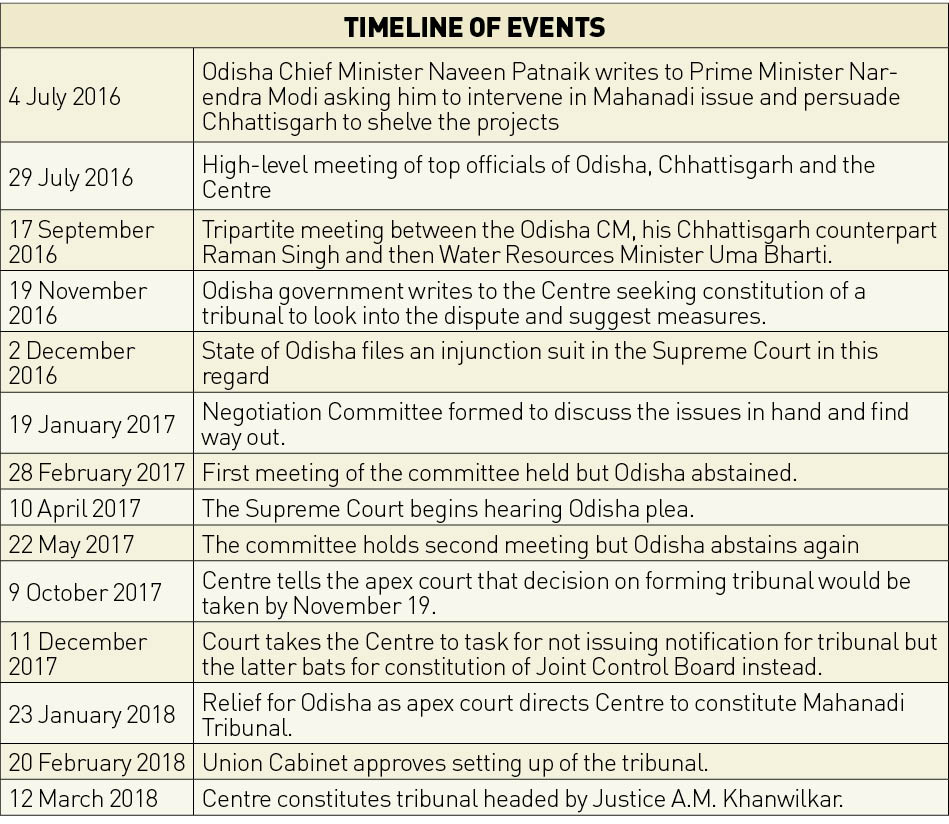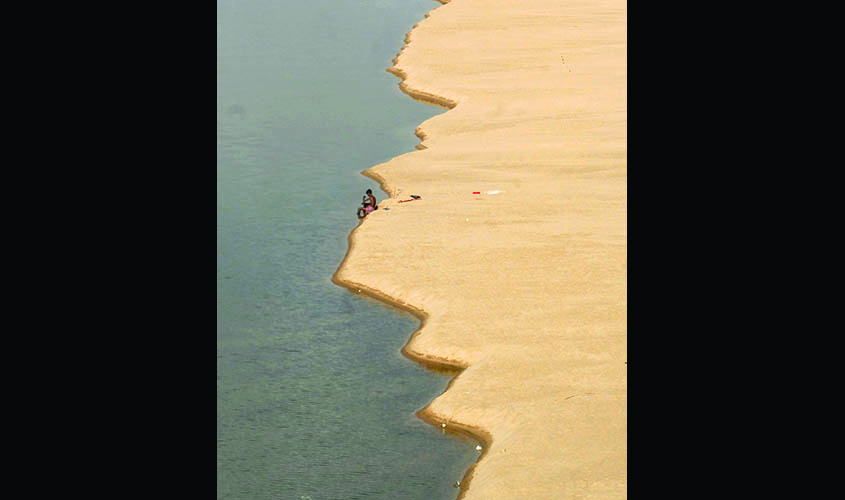Though the issue dates back to 1983, it was never a major dispute between neighbours before BJP came to power at the Centre in 2014.
There seems to be no end to the war of words among the political parties over the contentious issue of sharing of Mahanadi water between the riparian states of Odisha and Chhattisgarh. The verbal duel between the leaders of the two ruling parties – Biju Janata Dal (BJD) in Odisha and Bharatiya Janata Party (BJP) at the Centre – is taking the issue nowhere and damaging Odisha’s interest the most.
Though the dispute dates back to 1983 when Chhattisgarh was a part of Madhya Pradesh, it was never a major issue between the neighbours before BJP came to power at the Centre in 2014. The fact that Chhattisgarh too is ruled by the BJP became handy for the BJD leadership to extend its fixated and never-satiable grievance of “Centre’s step-motherly treatment to Odisha” to the new dispensation also.
What was initially a matter of general discussion among the political parties at the local level in Odisha, it took major proportions when national leaders of BJP started dabbling in it and even Chhattisgarh Chief Minister Raman Singh jumped into the fray. And then during his visit to Cuttack last month, Prime Minister Narendra Modi accused the BJD leadership of “misleading” the people on the issue.
The Mahanadi is the longest river among the ones flowing in east-central India. The seasonal river originates from the Sihawa hill near Pharsiya village in Dhamtari district of Chhattisgarh. She flows through the youngest state of the Indian Union for some length before entering Odisha and streams down to merge into the Bay of Bengal near the port town of Paradip, completing a total course of 851 km.
To resolve the riparian issues, Odisha and undivided Madhya Pradesh together had constituted a “Joint Control Board” in order to review the progress, investigation, survey, planning and execution of various projects on the river in both the states. With the main objective to discuss and resolve amicably any problem arising out of sharing of her water, the arrangement worked well for almost 20 years.
But problems cropped up again when Madhya Pradesh was bifurcated and Chhattisgarh was carved out of it in 2000. In bid to prove the viability of the new state, the Ajit Jogi-led Congress government and later the Raman Singh-led BJP government in Chhattisgarh augmented many projects in the state, including a few on the Mahanadi.
But in their enthusiasm, they did not consult the Naveen Patnaik-led BJD government in Odisha. As a mere formality, they simply informed the Odisha government about the projects on the river and left the matter at that. The BJD government, on the other hand, never took the matter seriously and slept on the communications. Neither did it analyse the pros and cons of these projects nor raised any objection keeping Odisha’s interest in mind.
The BJD government woke up from slumber only in 2016 when the vernacular media in Odisha raised the issue of construction of dams upstream of Mahanadi in Chhattisgarh by the BJP government there. They pointed out that by commissioning the projects, Chhattisgarh would draw water from the river far more than its share. It would impede the water flow to the downstream in the Odisha stretch of the river, consequently harming the irrigation in the rural parts of the state.

Suddenly, the BJD leadership found a stick to beat the BJP with as the latter gradually rose to take the position of the main Opposition in the state replacing Congress. What followed then was a barrage of allegations and counter-allegations between the BJD and BJP leaders. Not to be left behind, Congress too took up the issue and blamed all the three governments – Odisha, Chhattisgarh and the Centre – for the mess.
In November 2016, Odisha filed a complaint with the Supreme Court and, in the following month, a suit under Article 131 of the Constitution that deals with disputes between the Union and the state(s) or among the states. Odisha also pleaded for setting up of a tribunal to look into the dispute under Section 3 of the Inter-State Water Disputes Act, 1956.
On its part, Chhattisgarh proposed formation of a fresh Joint Control Board as per the 1983 agreement. But Odisha chose to remain obstinate and insisted on the formation of a tribunal instead. It also refused to attend the meetings of the Negotiation Committee to facilitate talks between the parties. Later, Odisha’s proposal was overturned by the Ministry of Water Resources and supported formation of a board.
However, on 23 January this year, the Supreme Court accepted Odisha government’s proposal and ordered the formation of a tribunal to ensure the equal sharing of water and handle future disputes. Following the SC ruling, the Centre finally constituted the Mahanadi Tribunal on 12 March with sitting Apex Court judge, Justice A.M. Khanwilkar as its chairman.
The SC verdict has come as a shot in the arm for the BJD and a loss of face for BJP. But the Prime Minister’s statement shows that it’s not the end and more fireworks are in the offing. Experts, however, opine that while the tribunal would take its own time and decide matters conventionally, it’s time we devised a more time-bound practical method involving the major stakeholders to resolve such water disputes in the future.

